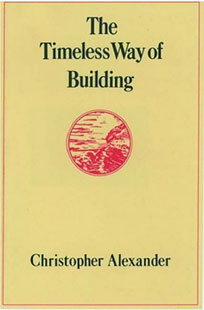Since finding so much inspiration from Edward Tufte’s books, I’ve made a point to branch out and read books that aren’t so innately tied to web development. Most recently, is The Timeless Way of Building by Christopher Alexander, a great book about designing and building for and around people.

The Timless Way of Building provides an interesting insight into building and designing things for and around people.
↩︎I traditionally find it extremely challenging to express my thoughts on our industry and how we do our jobs. The Timeless Way of Building has helped me get one step closer. By seeing our problems and shortcomings in the light of another industry, I’m able to gain a better and more thorough understanding of where we’re falling short. It’s absolutely fascinating, albeit unsurprising, how many parallels there are between the creation of web sites and the creation of buildings.
it’s important to understand the context of the book before we get into the details, but essentially, Alexander is discussing how buildings and architecture have lost that certain je ne sais quoi. They have become impersonal and impractical. Instead of encouraging community and interaction, they impede it. One of his explanations for how this has happened is that the people who use these buildings are rarely involved in the construction of the buildings. As a result, the buildings are built to be built, rather than being built to encourage and grow a community.
So it is inevitable that as the work of building passes into the hands of specialists, the patterns which they use become more and more banal, more willful, and less anchored in reality.Christopher Alexander
This was written about architecture and creating buildings nearly thirty years ago, yet, it’s as applicable to modern day web design and development as if it was written yesterday. As we specialize more and more with a certain technology or skill set, we make decisions that are more about the tools than they are about the solution. We wield things like AJAX with a willful indignance and disregard for whether it’s really solving the problem. In many cases, we’re so far removed from the real needs, we end up building just for the sake of building.
While I don’t particularly love or enjoy the design of Craigslist, ebay, or MySpace, they share a certain human element that makes them real. That human element, and organic growth, is something that we can’t force any more than we can force a tree to grow. We can however, understand the human side of things and create an environment, where the site can flourish.